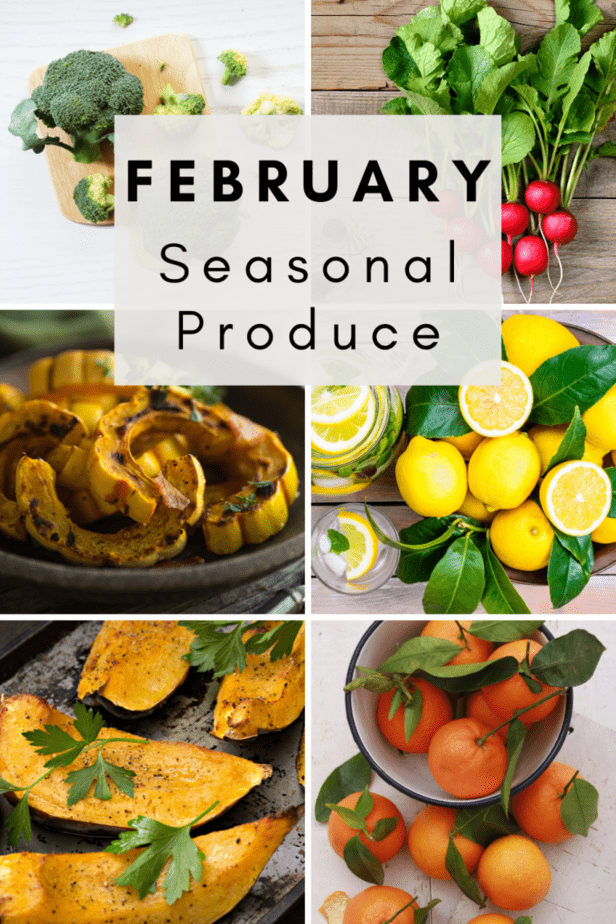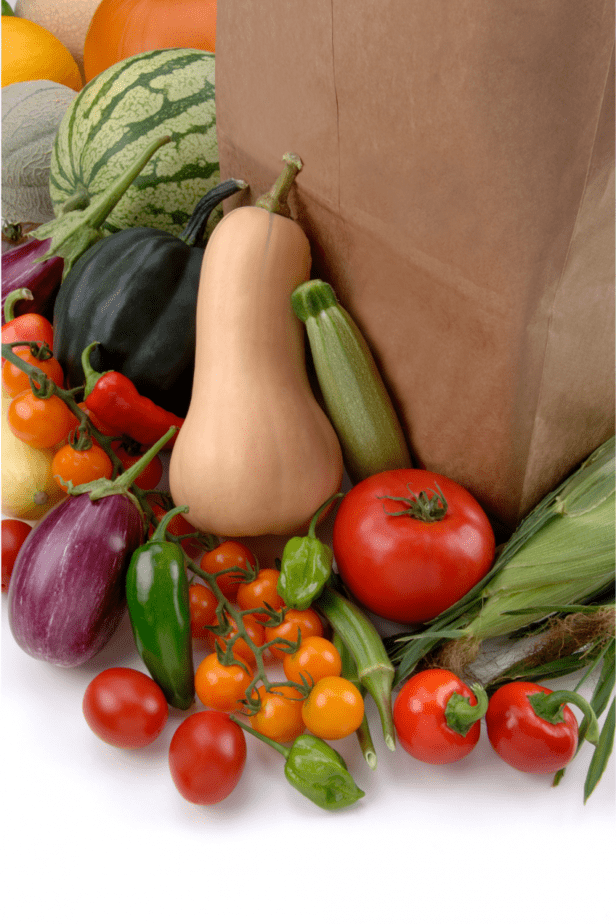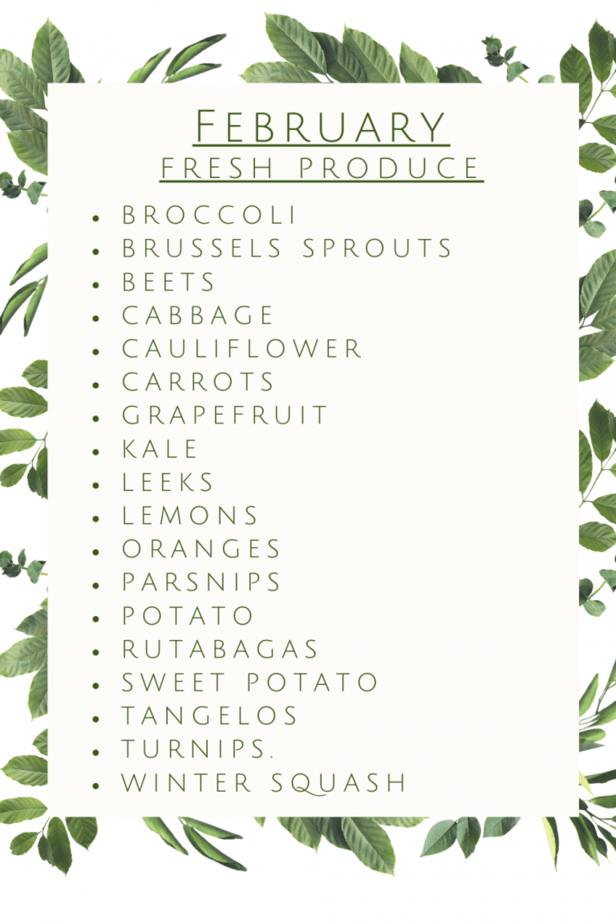February Seasonal Produce


Buying fresh February seasonal produce is my favorite way to meal plan. Getting to enjoy great food at the best price is a huge win for flavor, texture and price. There are so many ways to save money while enjoying organic fresh foods and seasonal produce is one of the best.
The best produce for price and taste!
I wish I could go to a farmers market every weekend to shop at each vendor. If you have this option you will be able to really enjoy a deal on february seasonal produce. If not you can still get great prices at your local grocery store.
Often times stores will get large batches of in season foods and they place them at a sale price. February seasonal produce is amazing and delciious. So If you see something on sale and in bulk at your local store most likely it’s because that is the February fruit of the month.
Why you will love shopping for fruits in season by the month.

1. Broccoli 2. Brussels Sprouts
3. Cabbage
4. Cauliflower
5. Fennel
6. Kale
7. Leeks
8. Parsnips
9. Potatoes
10. Radishes
11. Sweet Potatoes
12. Rutabagas
13. Turnips
1. Butternut squash
2. Delicata squash
3. Spaghetti squash
4. Acorn squash
5. kabocka squash

Depending on where you live there are slightly different fruits in season. However in the USA the list provided are the most common foods available in season in the month of February.
Comment below and tell me what is most in season in your local area if it is not listed in this post.
1. Grapefruit: Grapefruit is amazing as a delicious breakfast or juiced. You can even add it to a salad with some fresh herbs for a fresh side. 2. Clementine: Clementines are by far my kids favorite snack. We pack these in my daughters lunch as well. They are a great healthy on the go fruit for kids and adults alike. 3. Tangerines: Tangerines are similar to clementines but have a tart flavor compared to clementines which have a very sweet flavor. 4. Lemons: Lemons are great for cooking, baking and even drinks. There is nothing better then fresh squeezed lemon juice. I always reccommend using fresh lemon juice compared to the pre-squeezed lemon juice for the best flavor. 5. Oranges: Oranges are perfect for some fresh squeezed orange juice. You can also use them in cooking, baking and enjoy them on their own for a midday snack. 6. Tangelos: Tangelos are very similar to oranges. With the biggest difference being that they are easier to peel but they can be used as a substitute for oranges in recipes.
1. Broccoli: Broccoli roasted is the absolutel best way to enjoy this veggie. You can also use it in fresh salads, steamed, or in many savory dishes. Beef and broccoli in the slow cooker is an easy freezer meal you can use. 2. Cabbage: Cabbage is a very diverse vegetable and cooked it makes for healthy tasty savory dinners. You can also pickle cabbage and make a great saurkrat to use on reubans, with kielbasa or in a side salad. 3. Cauliflower: Cauliflower has always been treated like broccoli. But there are so many amazing ways to use this vegetable now. Try making cauliflower rice, cauliflower pizza crust, cauliflower buffalo wings or cauliflower queso sauce just to name a few. 4. Fennel: Fennel is a great liquorice type flavor commonly used in savory dinners and side salads. 5. Kale: Kale is great for a healthy heart salad, you can also use it in smoothies as a boost to your immune system. Or try baking kale in the oven to make some crispy kale chips. 6. Leeks: Leeks are apart of the onion family. They are wonderful in soups and can also be roasted and eaten on their own. 7. Parsnips: Parsnips are wonderful mashed and similar to a potato. They can be roasted and enjoyed as a potato substitute or eaten cooked on their own as a side. 8. Potatoes: Potatoes are in season quite a bit of the year. You can roast them, make them into the perfect fry or hash. There are so many great ways to enjoy potatoes. As they start to spud if you have extra potatoes lying around then try making some freezer hash browns to enjoy. 9. Radishes: Radishes are a wonderful low carb alternative to potatoes in recipe. I love using them in beef stew. Roasted parnsips give a very butter flavor and are so delish on their own as a side. 10. Sweet Potatoes: Sweet potatoes are a great healthy side and can be cooked a million different ways. Try mashing, roasting or sauteing them on the skillet. You can even use them in baking for some sweet treats. 11. Rutabagas: Rutabagas are another root vegetable. However they are lower in carbs and calories than potato and can be a great substitute for the traditional potato. 12. Turnips: Turnips are wonderful baked, boiled or steamed. Turnips are a wonderful side or used in savory dishes.
There are many winter squashes still in season in the month of February. Each one can be treated similarly by peeling and roasted, boiling steaming or mashing. Delicata squash is unique in the way that you can eat the skin of the squash. Some of the best seasonal squashes are butternut, delicata, spaghetti, acorn and kabocka squash.
February:
Vegetables:
Fruit:
Winter Squash:
What fruits and vegetables are in season in february?
Vegetables:
Fruit:
What fruit is in season in February and March?
What seasonal produce is currently available?
February foods in season:
Vegetables:
Fruit:
Winter Squash:
What food is seasonal in February?
Seasonal foods are great to enjoy the cheapest fruits and vegetables month by month. Here is a list of the best produce to enjoy in the month of February.
Vegetables:
Fruit:
Winter Squash:
Are strawberries in season in February?
Strawberries are just beginning to emerge in season in February. Depending on where you live they could be readily available in the month of February. But normally they are in season beginning in march and throughout some of the summer months.
Which vegetables grow in February?
These are the vegetables that grow in February:
What apples are in season in February?
Some of your best bet for seasonal apples in February are:
What can you harvest in February?
These are the vegetables that grow in February:

Follow Here! ????
Facebook
Twitter
Instagram
Pinterest
